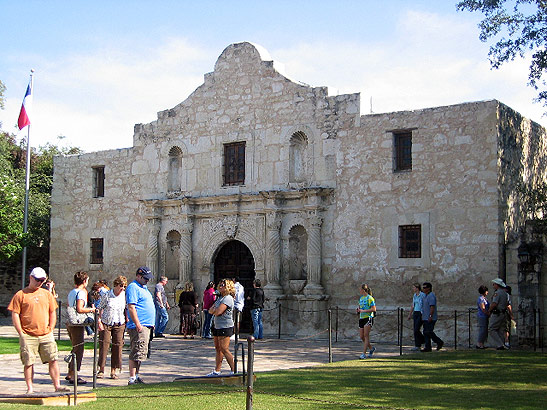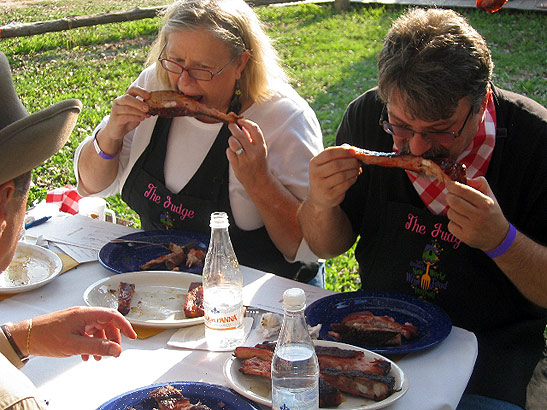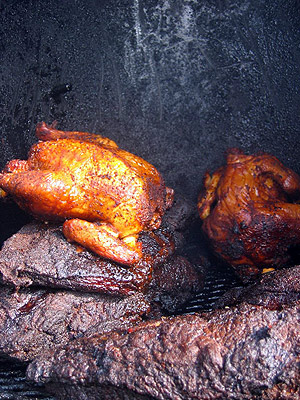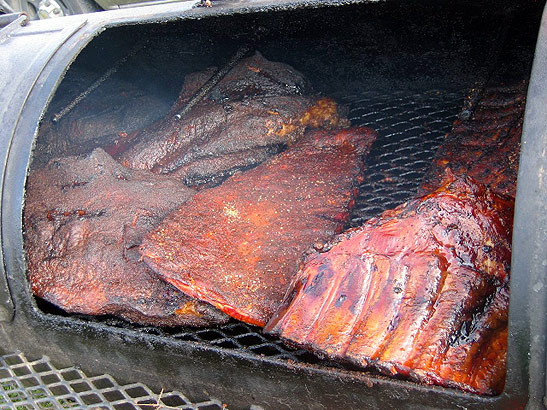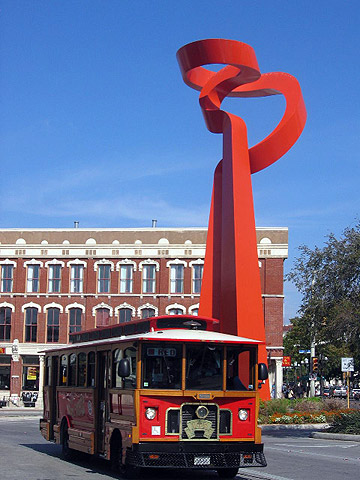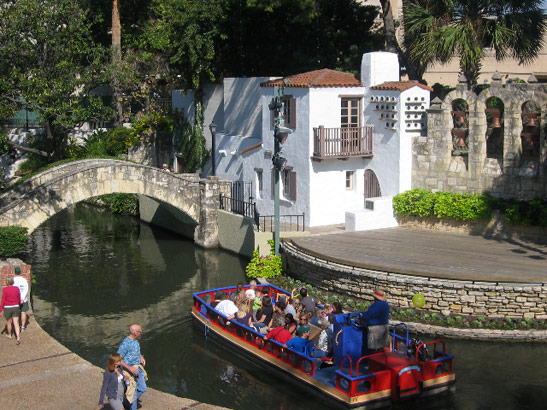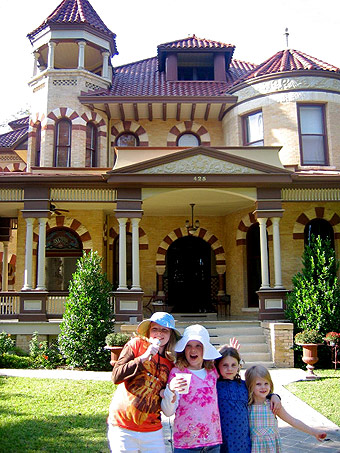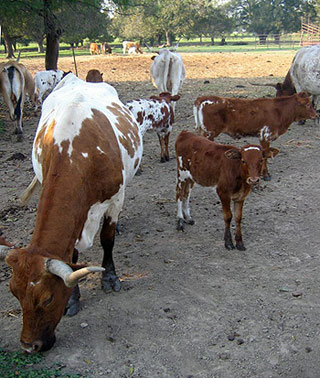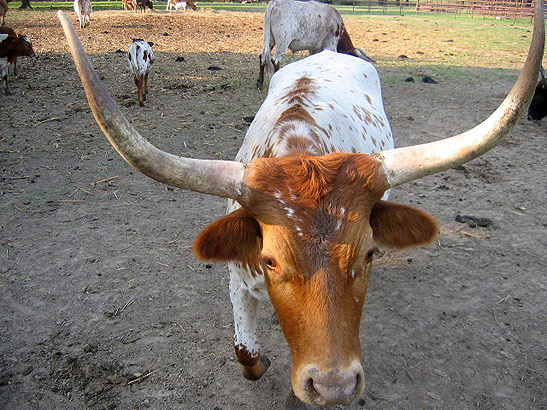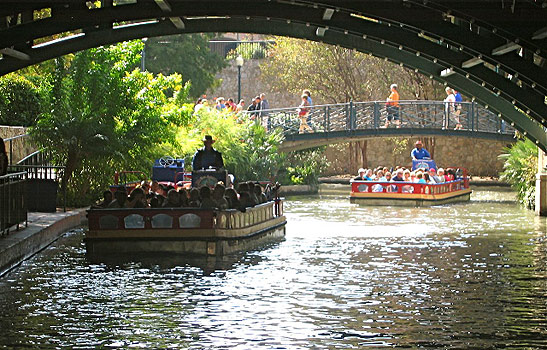 |
 |
|
 |

|
Deep
in the Heart Of
Texas Wine Country Story and photos by John Blanchette
The four-day event, next year held in May, included special dinners at restaurants around town, barbecue cook-offs, a grand tasting with 50 local restaurants pairing dishes with 125 different wines from all over Texas, and a black tie dinner/dance at the Omni Hotel.
Wine in Texas? Yes, my tongue and eyes have been opened. The state has eight appellations and is the fifth largest producer. With the new vineyard plantings underway, it will soon be number four, overtaking New York (California is first followed by Washington State and Oregon). Texans ride herd on their wine and don’t share much; only about five percent escapes the border. And there’s a reason, it’s delicious. Soils, climate and temperatures (terroir) similar to the Rhone Valley in France allow the nearly 200 Texas vintners to make some excellent Viogniers, Chenin Blancs, Grenache and Syrah. Thirty-six other wine grapes are grown commercially, from Pinot Noir, Merlot and Chardonnay to Tempranilo, Sangiovese and Muscat, but the Rhone varietals really shine. Millions of years ago an inland sea covered most of Texas, layering in alluvial soils containing limestone, chalk, flint and shale, similar to the soils in the Rhone Valley. Between the cities of San Antonio and Austin to the Northeast, lies the Texas Hill Country Wine Trail, an 80-mile stretch of rolling agricultural land harboring numerous vineyards with tasting rooms. Many from this area sampled their wines at the Festival, most notably Becker, Alamosa, Fredericksburg, Chisholm Trail, Pedernales, McReynolds and Sister Creek.
There is a long history of wine production in Texas, dating back to the 1650s when Franciscan priests planted the first vineyards to make sacramental wine, 100 years before grapes were planted in California. Prohibition virtually eliminated wine production until it was reintroduced in the 1970s, about the same time the wine industry began to get serious in California. Over 50 of the top restaurants and chefs in San Antonio took part in the Festival. Jason Dady, owner of Bin 555, The Lodge and Two Brothers BBQ (which won the ribs and brisket cook-off held at the expansive Rio Cibolo cattle ranch, a half-hour outside of San Antonio) is a James Beard Award winning chef. Also participating were 50 other local restaurants, most notably Boudro’s, Citrus, Francesca (at the Westin La Cantera), Grey Moss Inn, Kirby’s, Las Ramblas, Fig Tree, Biga on the Banks, Los Barrios and Las Canarias.
Becker Vineyards hosted a wine and food tasting event at the winery. Dr. Richard Becker is the Robert Mondavi of the Hill Country Wine Trail and a major organizer of the yearly New World Wine and Food Festival. His Chenin Blanc and Grenache wines are world class. San Antonio is the seventh largest city in the United States, a sprawling metropolis with an important role in the state’s history. It is situated in South Central Texas along the San Antonio River, which now rivals the Alamo as the city’s top attraction. It got its name from the feast day of St. Anthony, June 13, the date in 1691 when a Spanish expedition party established the town. The River Walk is currently being expanded and will eventually reach a length of 13 miles. Strolling the walkway is a pastime enjoyed by both tourists and locals. Highly recommended is a three-mile boat ride down the river. Knowledgeable pilots point out interesting facts about the city and detail its history as you enjoy the lovely flora and structures along the banks.
Originally a Native American settlement, San Antonio was ruled by Spain until Mexican Independence was granted in 1821. Then American and Mexican settlers were invited in to develop the area, but when Mexico tried to bring the territory back under its control, the 1836 Battle of the Alamo ensued, where James Bowie, Davy Crockett and 186 others lost their lives. The event triggered a call to establish the Republic of Texas under the slogan “Remember the Alamo” and two years later they were successful. In 1845 Texas was annexed by the U.S., which incited the Mexican War, and ultimately caused the accession of the entire American Southwest from Mexico. There was a large German immigration into the area beginning in the 1840s when free land (i.e. worthless) was offered to Germans fleeing the war and repression in Europe, if they would develop it. As a result, German was spoken on the streets of San Antonio as much as Spanish and English.
German settlers built the city’s most beautiful section, the 25-block King William District, as they prospered in their new country. Many local families can trace their history back to these settlers and German town names are common in the Hill Country. Cattle ranching became a major industry as the land was settled and the American cowboy was essentially born in San Antonio. Men on horseback were needed to drive cattle along the Chisholm Trail from San Antonio to the Kansas railheads. The city became a major cowboy frontier town with a wild saloon-based lifestyle and gambling, especially poker, developed and thrived, creating the game of Texas Hold’em and card players like Amarillo Slim and Doyle “Texas Dolly” Brunson became legends.
With the coming of the railroad in 1877 the town became more civilized and modern, but it came at a cost to some of the historic neighborhoods, which were torn down to accommodate the rails and to construct wider avenues and new buildings. Today it is a major destination city attracting over 25 million visitors a year to the River Walk and Texas wine country.
Maybe if the Alamo had a wine bar I would remember it better. If You Go: Market Square is full of Tex-Mex shops with artisan goods, restaurants and lively food stalls. Mi Tierra is a cornerstone here. Open 24 hours, it’s a busy, colorful and brightly decorated local restaurant with live mariachi bands strolling by the tables. Don’t miss the dance bar.
Over the weekend I stayed at the Westin La Cantera Resort in the hills above the city. It has a world-class golf course designed by Arnold Palmer and a great spa, but what I enjoyed most was the introduction by sommelier Steven Krueger to my favorite Texas wine, Mcpherson’s Viogneir from of all places, Lubbock. Not a region that trickles off the tongue when siting great wine producing areas, but this was the finest Viognier I ever tasted, including those from the mother country of France. Because there is so little made, if you want to try it you have to contact the winery. And depending on the laws of your state they may be able to ship it to you. Otherwise book a trip to Lubbock, home to the Texas Tech Red Raiders and the finest Viognier in the world. For information visit the websites of the Texas
Hill Country Wine Trail, the San
Antonio Convention and Visitors Bureau, (800-447-3372), New
World Wine and Food Festival, and Mcpherson
winery. |
|
Feedback for South of the Border Wine Country Hello John – I enjoyed reading your article. I live in
La Bufadora and have friends visiting next week, so you have given me some good
tips on where to go in our wine country. We have always called Cetto –
L.A. (like Los Angeles) Chet-o and it might have been worth mentioning that
it is actually Italian in origin. Also, I don't know about when visiting the
Valle, but when in town, it is better to have pesos than dollars. Right now
the rate is approx. 11.70 for each dollar. Just sayin' and like I said good
article!
Hi, We here at Country Living Magazine are working on a story about hotels around the US. We would like to feature the Paso Robles Inn. I have to find photos to go along with the story. I was wondering if you could please send me any images of the hotel. This can be anything from the rooms to the food! All images can be submitted low res and if selected I will ask for hi rez later. Also, if you know of any photographers that have photographed the hotel can you please give me the contact info? Thank you so much! --- Will Morel, Assistant Photo Editor, Country Living Magazine, New York, NY
I am looking forward to my "silver" years, which in my case, will be the years (if fate is good to me) that I will finally be traveling. New Zealand is at the top of the list - I have always been drawn to it. --- Sandra Mines, Seattle, WA
Yes, was a fun city. Bad wine though. --- Bo, Portland, OR
|
This site is designed and maintained by WYNK Marketing. Send all technical issues to: support@wynkmarketing.com

|











